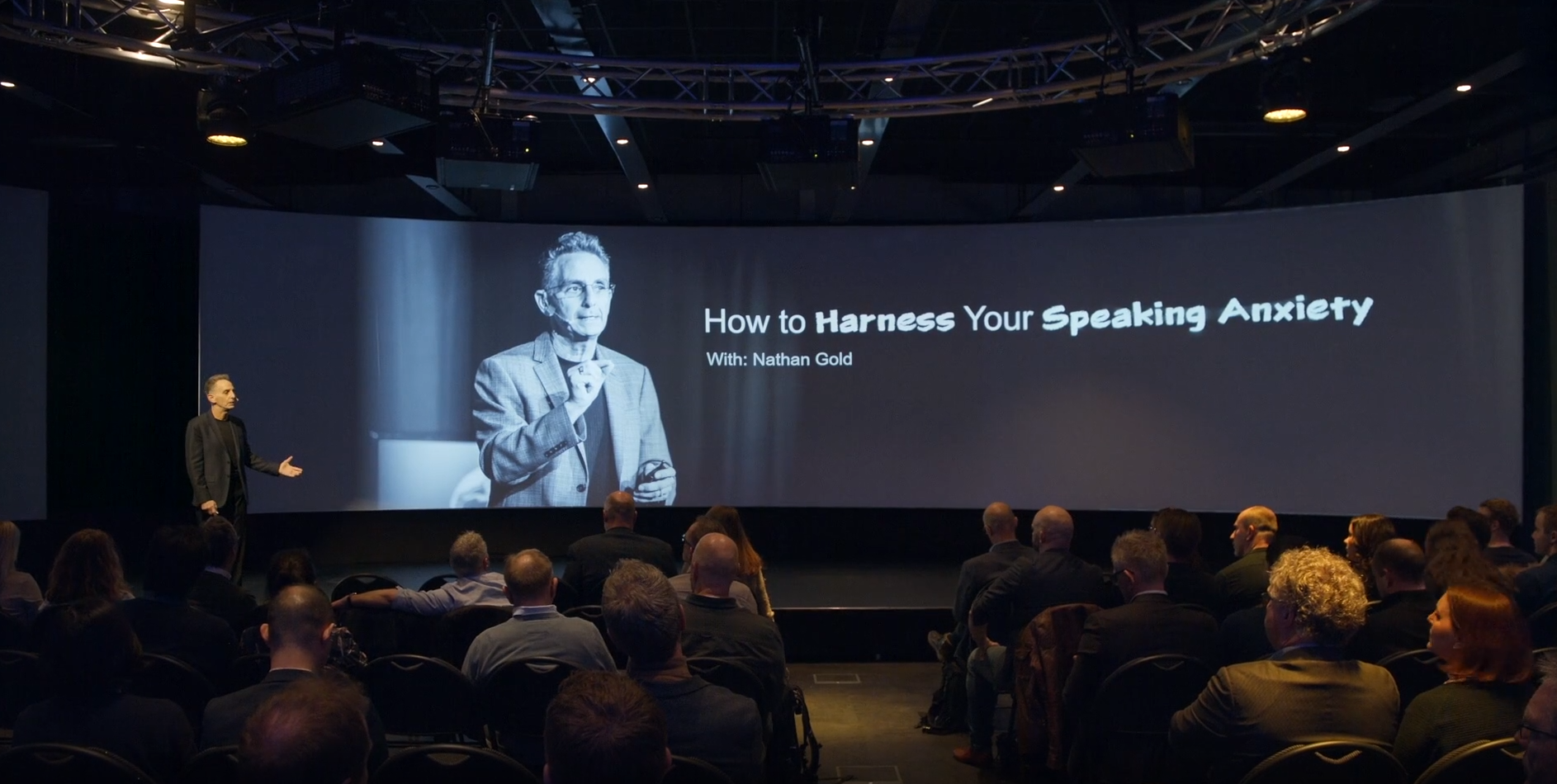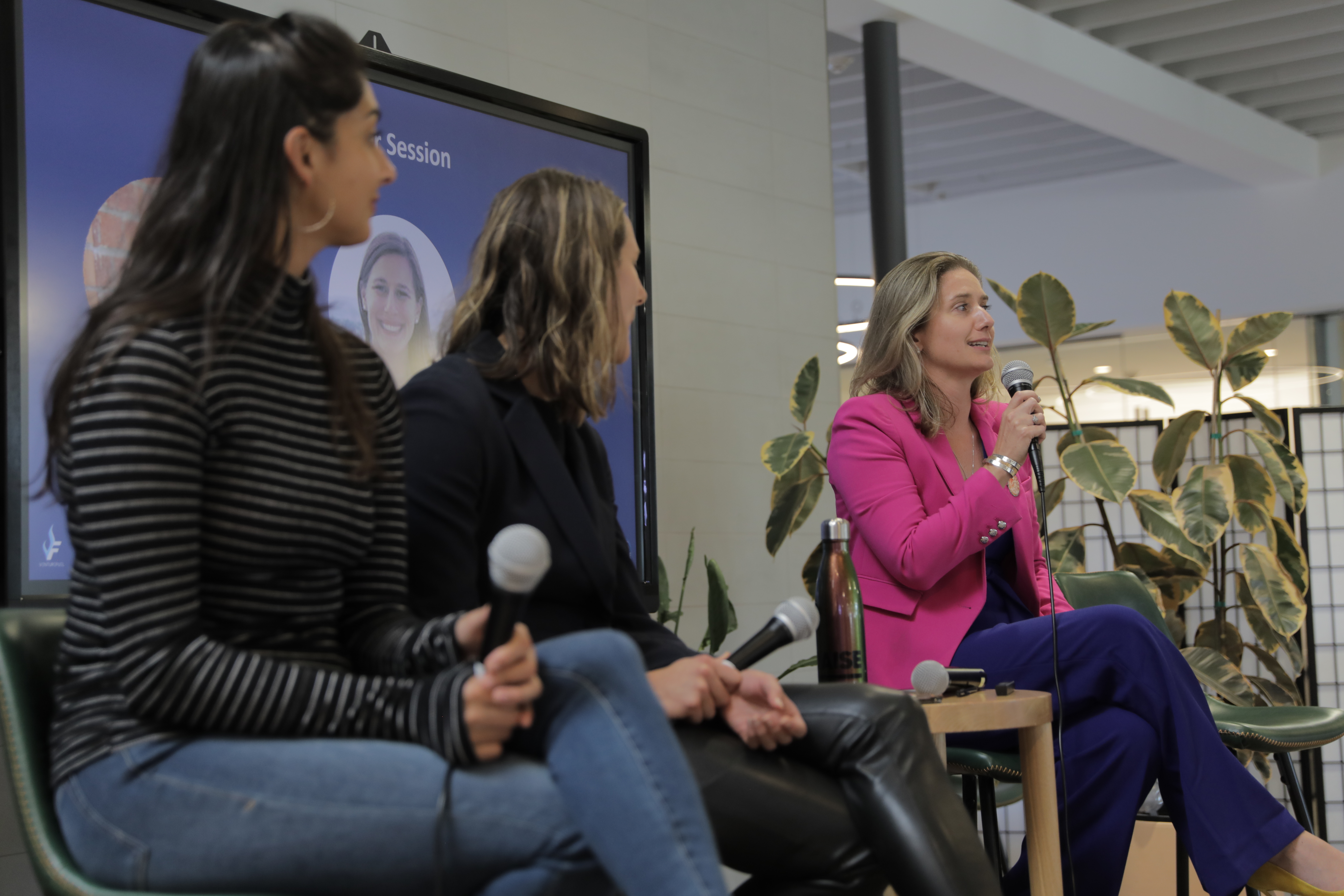
The COVID-19 pandemic, and ensuing switch to all-virtual environments, has totally changed the game for keynotes, pitches, sales meetings and other high-stakes presentations. That’s why it’s critical for founders to master this form.
Using Zoom, WebEx, Teams, Skype or other video conferencing tools, it’s possible to connect virtually with dozens of people per day all over the world. But without the natural eye contact, handshakes and banter that accompanies in-person presentations, it’s all the more challenging to stand out.
Nathan Gold, also known as the Demo Coach, has coached thousands of people on how to be most effective in delivering high-stakes presentations. In a Founders Network workshop, Gold shares his tips and tricks for presenting your best self, and presenting your product and service most effectively, using your webcam.
Register at Founders Network webinar to find out if you qualify for full membership and get actionable tips on:
- Optimizing your physical environment to put your best foot forward
- Ensuring top lighting, sound and video quality with common equipment
- Using eye contact and voice to engage your audience
- Building audience interaction and rapport virtually
“How to captivate your virtual audience is quite different than being in the room with them,” Nathan explains.
What’s more, the speed of communication is much faster today, which potentially raises the stakes for any individual presentation.
“The stakes are higher now, because now your investor can see five people in two hours. That means if you don't present yourself in a way that makes you truly stand out, they’re moving on.” - @nathangold Share on X“Rather than driving up to San Francisco for a meeting, your investor can see five people from all over the world in two hours now. That means if you don’t present yourself in a way that makes you truly stand out, they’re moving on,” Gold adds.
The first thing that founders need to think about is the physical aspects of their presentation. The first is sound quality, according to Gold: Even if your video quality is less than top-notch, ensuring that sound is clear, crisp and easy to understand is even more important.
“I recommend a good external microphone that plugs into your USB port with podcast radio quality; these cost about a hundred bucks,” Gold says.
“Likewise, founders can optimize their visual appearance with a basic external webcam. Lighting should also be balanced, along with a background — whether a virtual background or an organic background — that doesn’t distract from your message. There are also more sophisticated ways of using software to enhance what your camera can do,” Gold adds.
“Over a video, you've lost the in-person technique that people use to build rapport, like shaking hands. You need to be able to do that remotely.” - @nathangold Share on XOnce all of those elements are optimized, founders should learn the basic techniques for keeping your audience engaged while you’re presenting. That begins with something as basic as looking into the lens, rather than at the boxes on the screen, in order to mimic eye contact.
“If you don’t look into the camera, you’re not making eye contact with your audience. And it’s the hardest part,” he says.
In the same way, founders should make adjustments in how they use their voice in a virtual presentation: If using a microphone, your voice is properly amplified; participants may also be using headphones. With some practice, you can use those elements to captivate your audience just as you would an in-person audience.
There are also ways to replicate the natural rapport that good speakers rely on in an in-person presentation: Warmly greeting people, making small talk, and getting to know people individually outside of the actual content of the presentation.
“You can use a camera very effectively if you know what to do with it.” - @nathangold Share on XGold says that for in-person presentations, he often advises people to arrive early to greet people, network and interact on a personal level, which can have the effect of reducing anxiety and making the presentation feel more natural. Similar principles can apply in a virtual setting as well.
“How do you do that in a virtual presentation? You can start your meeting a half an hour early, letting people know in the invitation that you’ll be there if they want to drop in early, network and say hello.”
“If done right, your virtual presentation can make you and your company more memorable. But it’s up to founders to learn these skills,” says Gold.
“It’s the responsibility of the presenter to keep people engaged,” Nathan adds.






